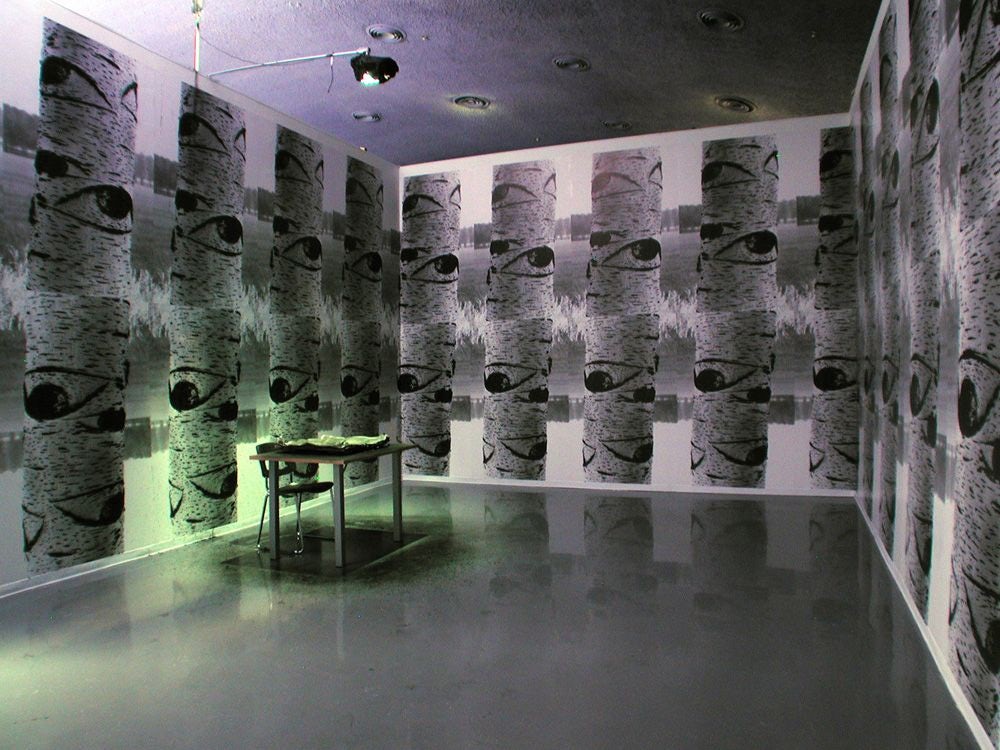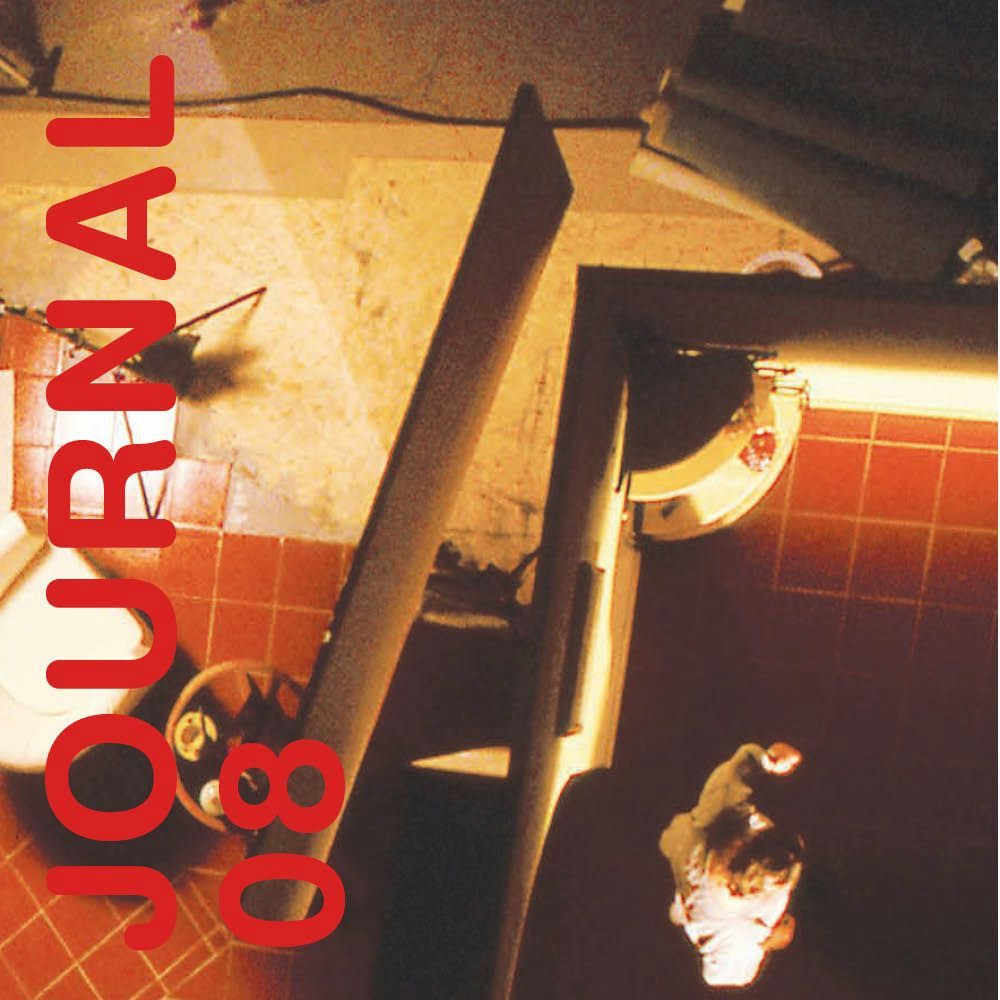
Michel François
2003.11.14 - 12.21
CHANTAL PONTBRIAND
Michel François’ work’s, one might say, is indefinable, since it navigates from one world to another, one support to another, one space or territory to another. Essentially nomadic, François takes what is at his disposal and places it at the disposal of others. This circulation of things, ideas, images, and beings is the heart of the work. From the being there, he creates the being with. From the immanence of the world emerges energy, intensity.
He captures, takes images, amongst other things – images of people, of plants, of places (very rarely). He captures the gesture through the image, through the photographer’s snapshot. He captures this energy and puts it back into circulation again. Blown up, these images can be found on the walls, or on the ground, in poster format, to be rolled up and taken away, to be re-exhibited at one’s home, or elsewhere, in one’s own environment or in someone else’s. François’ universe, as fragmented as it is to begin with, is destined to be refragmented elsewhere, throughout other universes, in a perpetual circulation of things, in attentive gestures, or the questioning, that precedes that of capture, or equally in abandonment and dispersion. There is thus an economic dimension to the work – a dimension that one would like to see more of in the economy of the real world: that of circulation, exchange, and donation.

When he exhibits – and this is no doubt a tiny part of the real work that he does, the process certainly being more valuable to him than the exhibition as the final product – François proposes a place to be. And this is much more than an exhibition as a place to see, or capture, images. He arranges his exhibitions as places of transit, nomadic as he is, and as we are no doubt also today more than ever. Here and there, we find things, as in an apartment or an office, a train station, or even a gallery. But these things are not there to offer us a vision of the world, or even a vision of art, imbued with some tautology or other. Nor is there psychologism or sociologism, as is often found in contemporary photography. No comment on the world and its beings. Only gestures, things placed there. A visit to the exhibition resembles a walk in the woods or on the beach by the ocean. We don’t expect anything, and things happen, unexpected.
In this exhibition in particular, four walls are covered with a repeated image: the trunk of a birch tree with, in the middle, black marks of bark forming an eye. This eye looks at you, insistently. It looks at you from all sides – from the front and the back, and laterally, too. This eye is not that with which we are usually confronted: it encircles us, exerts a terrible pressure on we who look at it. The eye can be carried away: there is a pile of posters on the floor. We can, at our leisure, isolate ourselves again, regain our freedom, steal away with our eye, recapture that view that flees and escapes into an unending circular horizon. This promenade of the eye is confronted in another room. We enter and find ourselves in front of a movie projector placed in front of a mirror. The reflection is strong, even blinding. Here, light shuts off vision, obstructs it, produces its opposite. Here again, the visitor-viewer is encircled, immersed in that which is the view and the vision, in the omnipotence of the eye that encompasses the world, the link between what is intimate and what is other. The medium of the poster, which allows us to recapture what escapes us, that which flees so intensely, in a monstrous imposed flight, is present. The image of a movie studio, seen from a above, presents an aerial view, that of the omniscient, or that of the angel of history, the one of whom Benjamin said had to face the storm of progress.
Although François clearly addresses what is a dialectic between himself and the world, illuminated by the eye – and, especially today, the mediatized eye – that the world casts upon the image-reproduction technologies that are photography and cinema, he does not forget the material, corporal, organic dimension of this dialectic. In another room of this exhibition, we enter into a double projection of a large scale single video image (the viewer/visitor’s body scale). The image is itself double: two hands manipulate a piece of aluminum foil: the forms change; the manipulator creates all sorts of shapes that change almost each second. We see mainly organic forms: bird heads, dog heads, other skulls: the organicity of the world, in its multiform animality, unfolds. The gesture is strange, the result both fascinating and monstrous. But what adds to the strangeness is the discovery that this split image is perfectly symmetrical; thus, it is nothing like a normal body. Two hands perform gestures reflected identically in perfect synchronicity. This is the strangest and most monstrous part of the affair. François takes us back once more to the impossibility of the image, its constant and absolute schism from the real. It reminds us of the distance that there is between the real and the image, beyond the illusion. The necessary distance. And in the ultra-mediatized world in which we live, this is essentially a strong political gesture.
This exhibition is supported by le Commissariat général aux Relations internationales de la Communauté française de Belgique et de la Délégation Wallonie-Bruxelles au Québec and l’Agence Québec Wallonie- Bruxelles pour la jeunesse.